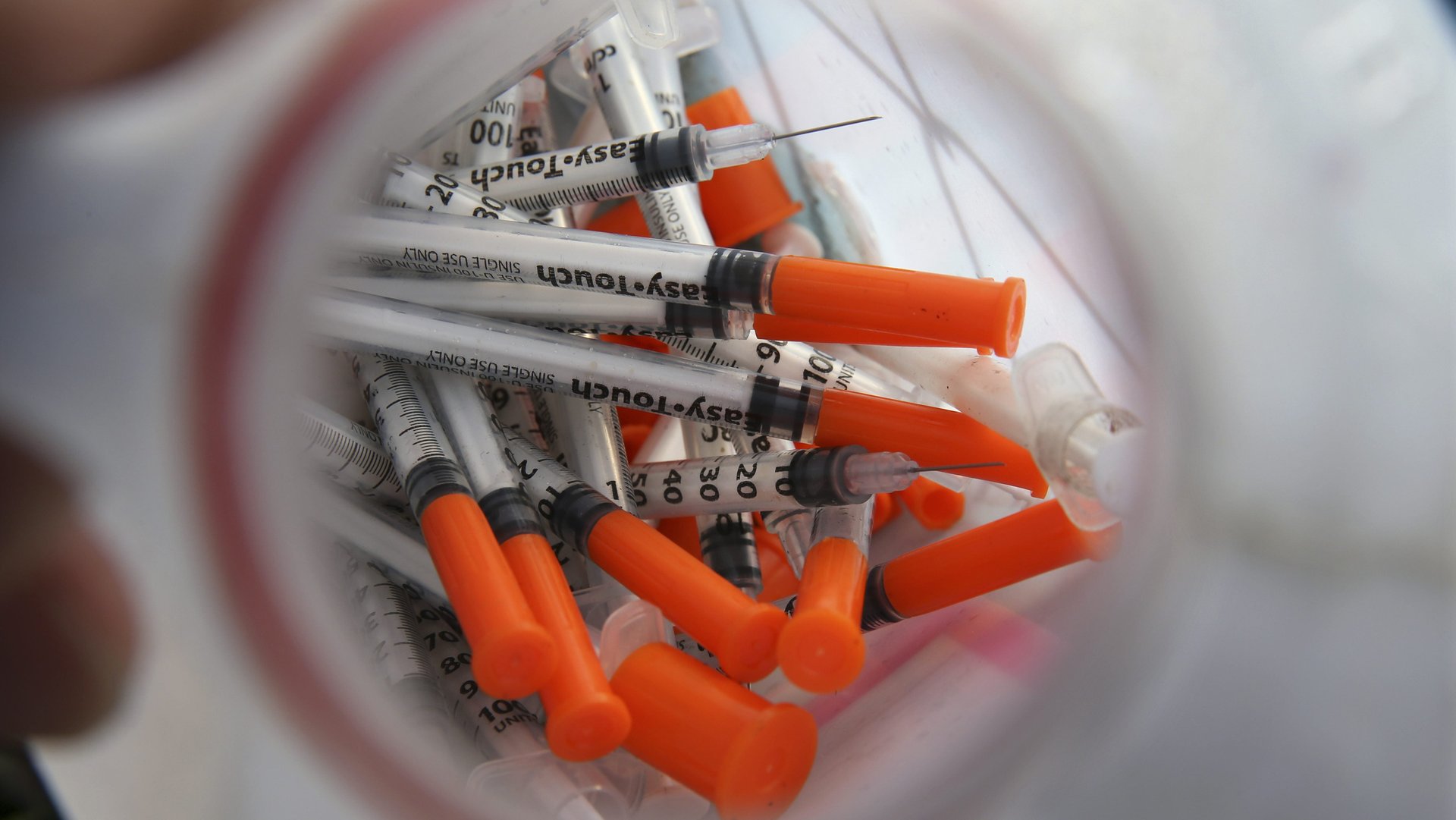A sheriff in an opioid county won’t have cops carry a $37.50 dose of life-saving naloxone
One sheriff in an opioid-ravaged US county won’t have his cops carry a $37.50 life-saving drug that reverses overdoses, citing the cost to taxpayers. Naloxone, often sold under the brand name Narcan, is too expensive, sheriff Richard K. Jones of Butler County, Ohio told reporters, to keep reviving the same addicts over and over.


One sheriff in an opioid-ravaged US county won’t have his cops carry a $37.50 life-saving drug that reverses overdoses, citing the cost to taxpayers. Naloxone, often sold under the brand name Narcan, is too expensive, sheriff Richard K. Jones of Butler County, Ohio told reporters, to keep reviving the same addicts over and over.
Butler County, Ohio, has seen a rampant epidemic of opioid overdose and increase in the number of related deaths every year since 2012, according to the county coroner. But it’s “sucking the taxpayers dry,” Jones says, and his officers “feel unsafe” administering the drug to people “because they have to get down on their knees, squirt it into their nose, and the people they are saving are not happy to see them.”
“There’s no law that say police officers have to carry Narcan,” Jones told local NBC TV station WTHR. “Until there is, we’re not going to use it.”
Jones’ decision is a particularly stark response to a debate over naloxone that has some states and cities embracing its life-saving potential, while some—particularly in law enforcement—question whether its availability is helping enable the opioid epidemic.
Naloxone works by binding to parts of the brain that are flooded by dopamine during an overdose, blocking the effects of the opioid for 30 to 90 minutes and allowing the body a chance to reverse the severe respiratory depression that leads to overdose death. It’s been used as an injection for years—the US Centers for Disease Control credits it with saving 26,000 lives between 1996 and 2014.
Beginning with municipal police in Quincy, Massachusetts in 2010, some police departments began issuing officers naloxone kits. The New York City Police Department, the largest in the country, has been using Narcan since 2014. But after the US Food and Drug Administration approved it for use as a nasal spray in 2015, use spiked; police departments in several US cities began carrying the drug in their cars, some states and cities passed bills making it available without a prescription, and organizations began offering it free to laypeople.
This year, the New York City mayor’s office mounted a public-health campaign, covering public transit with ads encouraging lay people to “save a life” and carry naloxone with them.
But not everyone is so sure. Naloxone doesn’t prevent relapse, and in a country with a shortage of addiction counseling, people will inevitably be left without resources to break the cycle. Some question whether the availability of naloxone, combined with the availability of cheap opioids, pushes drug use over the edge, according to a report by the Marshall Project.
“There is frustration because a lot of people think that this is a fix-all for the heroin problem, which it’s not,” Detective Lt. Patrick Glynn, of the Quincy, Massachusetts police department, told the Marshall Project. “I understand why some officers are getting frustrated with it. You can have the same officer that revived the same person two or three times.”
But others are more optimistic.
“[I]t’s a matter of perspective. You can look at Narcan as enabling or you can look at it as you’re helping fellow human beings survive until they get healthy,” Vermont State Police captain Rick Hopkins told the Marshall Project. All officers in his unit carry it.